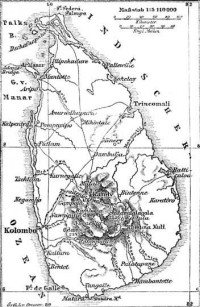 The Central Province covers an important era in the Sri Lankan history. There is evidence that the history of the Central Province runs up to the periods lasting before the birth of The Christ. Many historians uncover the folk stories as evidence which shows that the Central Province has a long history from that of Ravana period. During that period it was called ‘Malaya Rata’ and from time to time tribes such as Yaksha, Raksha and Naga have inhabited in The Central Province, and mostly the Yaksha and Raksha tribes have lived in “Malaya Rata”. According to the ‘Mahavamsa’ these tribes are the descendants of Pulindayin Kuweni. Inscriptions found in Bambaragala, Haragama, Doolwela, Wegiriya, Molagoda, Yanlena, Galabava and Gonawatta prove the above facts.
The Central Province covers an important era in the Sri Lankan history. There is evidence that the history of the Central Province runs up to the periods lasting before the birth of The Christ. Many historians uncover the folk stories as evidence which shows that the Central Province has a long history from that of Ravana period. During that period it was called ‘Malaya Rata’ and from time to time tribes such as Yaksha, Raksha and Naga have inhabited in The Central Province, and mostly the Yaksha and Raksha tribes have lived in “Malaya Rata”. According to the ‘Mahavamsa’ these tribes are the descendants of Pulindayin Kuweni. Inscriptions found in Bambaragala, Haragama, Doolwela, Wegiriya, Molagoda, Yanlena, Galabava and Gonawatta prove the above facts.
During the Anuradhapura period the Central Province including the Kandy district was called by several names that refer to the upcountry, such as ‘Malaya Deshaya’, Malaya Mandalaya, Malaya Rata, and Malaynadu. During the pre-Anuradhapura era whole Sri Lanka was divided into two parts: Uththara Deshaya and Rohanaya and it can be noted that the upcountry which was also called Girimandalaya had a closer connection with the Rohanaya.
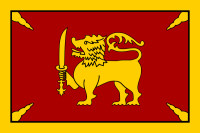 Later Sri Lanka was divided into four parts namely Rajarata, Dhakkina Deshaya, Rhohana Deshaya and Merukandara (Malaya Rata) and the central hills belonged to Merukandara or Malaya rata. The river Mahaveli divides the Malaya Deshaya as Uththara Malaya and Dakkina Malaya. In the Anuradhapura period Uththara Deshaya operated as a divisional state. Then during the period of king Parakramabhahu 1st , the Uththara and Dakkina divisions were combined together and was called ‘Malaya.’
Later Sri Lanka was divided into four parts namely Rajarata, Dhakkina Deshaya, Rhohana Deshaya and Merukandara (Malaya Rata) and the central hills belonged to Merukandara or Malaya rata. The river Mahaveli divides the Malaya Deshaya as Uththara Malaya and Dakkina Malaya. In the Anuradhapura period Uththara Deshaya operated as a divisional state. Then during the period of king Parakramabhahu 1st , the Uththara and Dakkina divisions were combined together and was called ‘Malaya.’
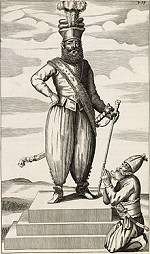 During the 6th A.C to the 11th A.C Malaya Deshaya was ruled by a prince named ‘Malaya Raja’ yet it was under the authority of the rulers of Anuradhapura and Polannaruwa. But after the administrative centers of the country changed towards the South-West the emergence of the upcountry is visible. With the collapse of the Pollonaruwa kingdom, its inhabitants started shifting toward Malaya Deshaya and it caused its population growth. Towards the 14th century, Malaya rata, which is the present central province, marked an important turning point in the Sri Lankan political history. The historians suggest that this trend is visible by the shifting of the kingdom to Gampola by king Buwanekabahu IV and later several kings establishing their kingdom in the upcountry and the bringing of the sacred Tooth relic to Gampola. The specialty of the central province is that it has a natural protective structure towards enemy attacks. It provided enough protection to the kings to organize armies to attack enemies and protect the nation from invades. The birth of “Senkadagala” is marked when Senasammatha Wickramabahu chose Senkadagala as his Capital city in 1480 A.C.
During the 6th A.C to the 11th A.C Malaya Deshaya was ruled by a prince named ‘Malaya Raja’ yet it was under the authority of the rulers of Anuradhapura and Polannaruwa. But after the administrative centers of the country changed towards the South-West the emergence of the upcountry is visible. With the collapse of the Pollonaruwa kingdom, its inhabitants started shifting toward Malaya Deshaya and it caused its population growth. Towards the 14th century, Malaya rata, which is the present central province, marked an important turning point in the Sri Lankan political history. The historians suggest that this trend is visible by the shifting of the kingdom to Gampola by king Buwanekabahu IV and later several kings establishing their kingdom in the upcountry and the bringing of the sacred Tooth relic to Gampola. The specialty of the central province is that it has a natural protective structure towards enemy attacks. It provided enough protection to the kings to organize armies to attack enemies and protect the nation from invades. The birth of “Senkadagala” is marked when Senasammatha Wickramabahu chose Senkadagala as his Capital city in 1480 A.C.
The uprising of the upcountry and its inhabitants for the freedom of Sri Lanka can be seen after the invasion of the Portuguese in 1500 A.C. During this period the upcountry was not that prosperous and Udunuwara, Yatinuwara, Dumbara, Harispaththuwa and Hewaheta were the main cities that belonged to the upcountry. And Matale, Uwa, Kothmale, and parts of Sath Korele, Sathara Korele, Thun Korele, Sabaragamuwa also belonged to the upcountry.
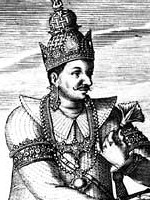 During this period, the main kingdom of Sri Lanka was Kotte. Around 1582 A.C, Senkadagala was conquered by the Seethaweka kingdom which emerged as a result of the political controversies of the 1521 A.C. At this point, except for the Western kingdom and the Tamil state of the North, whole Sri Lanka was under the ruling of Seethaweka kingdom. Accordingly it is noted that the autonomy status and the divisional limits of the upcountry began to change.
During this period, the main kingdom of Sri Lanka was Kotte. Around 1582 A.C, Senkadagala was conquered by the Seethaweka kingdom which emerged as a result of the political controversies of the 1521 A.C. At this point, except for the Western kingdom and the Tamil state of the North, whole Sri Lanka was under the ruling of Seethaweka kingdom. Accordingly it is noted that the autonomy status and the divisional limits of the upcountry began to change.
In 1592, Don Juan or Konappu Bandara defeated Portugese in Danthure battle and became the King of the Upcountry by the name Vimaladharmasuriya and affirmed Dhona Kathrina his Queen marking the beginning of the Upcountry kingdom. Accordingly the upcountry kingdom rises as a powerful free state from the Kotte and Seethawaka kingdoms and king Vimaladharmasuriya made his kingdom the pinnacle of the Buddhist civilization. Likewise the Kandyan state prevailed from 1593-1815 and during this period the kings who ruled the upcountry kingdom are as follows.
| King | Reign |
| King Vimaladharmasuriya I | 1590 - 1604 |
| King Senarath | 1604 - 1635 |
| King Rajasinghe II | 1635 - 1687 |
| King Vimaladharmasuriya II | 1687 - 1707 |
| King Weeraparakrama Narendrasinghe | 1707 - 1739 |
| King Wijaya Rajasinghe | 1739 - 1747 |
| King Keerthi Sri Rajasinghe | 1747 - 1782 |
| King Rajadhi Rajasinghe | 1782 - 1798 |
| King Sri Wickrama Rajasinghe | 1798 - 1815 |
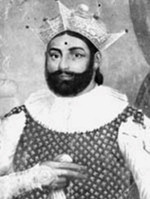 In 1815 the British rulers conquered the Upcountry through an agreement signed by both the British & Upcountry rulers. However, before this agreement the upcountry rulers won the Danthure and Gannoruwa battles victoriously against the British. The first rebellious act against the British invasion of the upcountry was performed by a Kandyan Buddhist monk named Wariyapola Sri Sumangala thero.
In 1815 the British rulers conquered the Upcountry through an agreement signed by both the British & Upcountry rulers. However, before this agreement the upcountry rulers won the Danthure and Gannoruwa battles victoriously against the British. The first rebellious act against the British invasion of the upcountry was performed by a Kandyan Buddhist monk named Wariyapola Sri Sumangala thero.
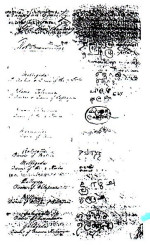 In 3 years time from the agreement of 1815, the first freedom struggle against the British rose from Wellassa. The Battle was led by many Kandyan leaders such as Monaravila Kappetipola, Hanguranketha Dingirala, Kohukumbure Rate Rala. This is a fine example of the bravery of the people of the upcountry. Even though this first freedom struggle was brutally suppressed through the British gun power, the strength and courage of the Kandyans couldn’t be defeated. The second freedom struggle of 1848 led by Puran Appu from Matale had the ability to put the British rulers in a very difficult situation. Therefore till the gaining of freedom in 1948, it is noticed that the people of the upcountry has performed an important role in the History of Sri Lanka.
In 3 years time from the agreement of 1815, the first freedom struggle against the British rose from Wellassa. The Battle was led by many Kandyan leaders such as Monaravila Kappetipola, Hanguranketha Dingirala, Kohukumbure Rate Rala. This is a fine example of the bravery of the people of the upcountry. Even though this first freedom struggle was brutally suppressed through the British gun power, the strength and courage of the Kandyans couldn’t be defeated. The second freedom struggle of 1848 led by Puran Appu from Matale had the ability to put the British rulers in a very difficult situation. Therefore till the gaining of freedom in 1948, it is noticed that the people of the upcountry has performed an important role in the History of Sri Lanka.










